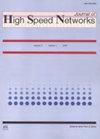一种基于相反方向的连续扰动更新的反共识策略
IF 1
Q4 COMPUTER SCIENCE, INFORMATION SYSTEMS
引用次数: 0
摘要
在现代社会中,多智能体共识被应用于分布式机器学习、无线传感器网络等许多应用中。然而,由于某些智能体可能会受到外部攻击或内部故障的影响而表现异常,因此容错共识问题是近年来研究的热点问题之一,其中Q-consensus是在一般网络中识别所有故障智能体并对正常智能体达成共识的最先进、最有效的方法之一。为了对抗q -共识算法,本文提出了一种新的策略,即分裂攻击,该策略简单但能够破坏共识收敛。通过将相邻节点的所有状态加一个额外的扰动,将正常节点分成子群并收敛到两个独立的值,从而打破共识。考虑了两种情况,包括引入额外的故障节点和破坏原有节点。更具体地说,在前一种情况下,采用了两个额外的故障节点,每个故障节点都负责误导部分正常节点。而在后者中,两个原始正常节点被破坏,从而误导整个系统。此外,折衷节点的选择本质上是一个分类问题,因此通过CNN进行了优化。最后,通过数值仿真验证了所提方案的有效性,表明所提方法优于其他攻击方法。本文章由计算机程序翻译,如有差异,请以英文原文为准。
An anti-consensus strategy based on continuous perturbation updates in opposite directions
In modern society, multi-agent consensus is applied in many applications such as distributed machine learning, wireless sensor networks and so on. However, some agents might behave abnormally subject to external attack or internal faults, and thus fault-tolerant consensus problem is studied recently, among which Q-consensus is one of the state-of-the-art and effective methods to identify all the faulty agents and achieve consensus for normal agents in general networks. To fight against Q-consensus algorithm, this paper proposes a novel strategy, called split attack, which is simple but capable of breaking consensus convergence. By aggregating all the states of neighboring nodes with an extra perturbation, the normal nodes are split into sub-groups and converge to two separate values, so that consensus is broken. Two scenarios, including the introduction of additional faulty nodes and compromise of the original nodes, are considered. More specifically, in the former case, two additional faulty nodes are adopted, each of which is responsible to mislead parts of the normal nodes. While in the latter one, two original normal nodes are compromised to mislead the whole system. Moreover, the compromised nodes selection is fundamentally a classification problem, and thus optimized through CNN. Finally, the numerical simulations are provided to verify the proposed schemes and indicate that the proposed method outperforms other attack methods.
求助全文
通过发布文献求助,成功后即可免费获取论文全文。
去求助
来源期刊

Journal of High Speed Networks
Computer Science-Computer Networks and Communications
CiteScore
1.80
自引率
11.10%
发文量
26
期刊介绍:
The Journal of High Speed Networks is an international archival journal, active since 1992, providing a publication vehicle for covering a large number of topics of interest in the high performance networking and communication area. Its audience includes researchers, managers as well as network designers and operators. The main goal will be to provide timely dissemination of information and scientific knowledge.
The journal will publish contributed papers on novel research, survey and position papers on topics of current interest, technical notes, and short communications to report progress on long-term projects. Submissions to the Journal will be refereed consistently with the review process of leading technical journals, based on originality, significance, quality, and clarity.
The journal will publish papers on a number of topics ranging from design to practical experiences with operational high performance/speed networks.
 求助内容:
求助内容: 应助结果提醒方式:
应助结果提醒方式:


